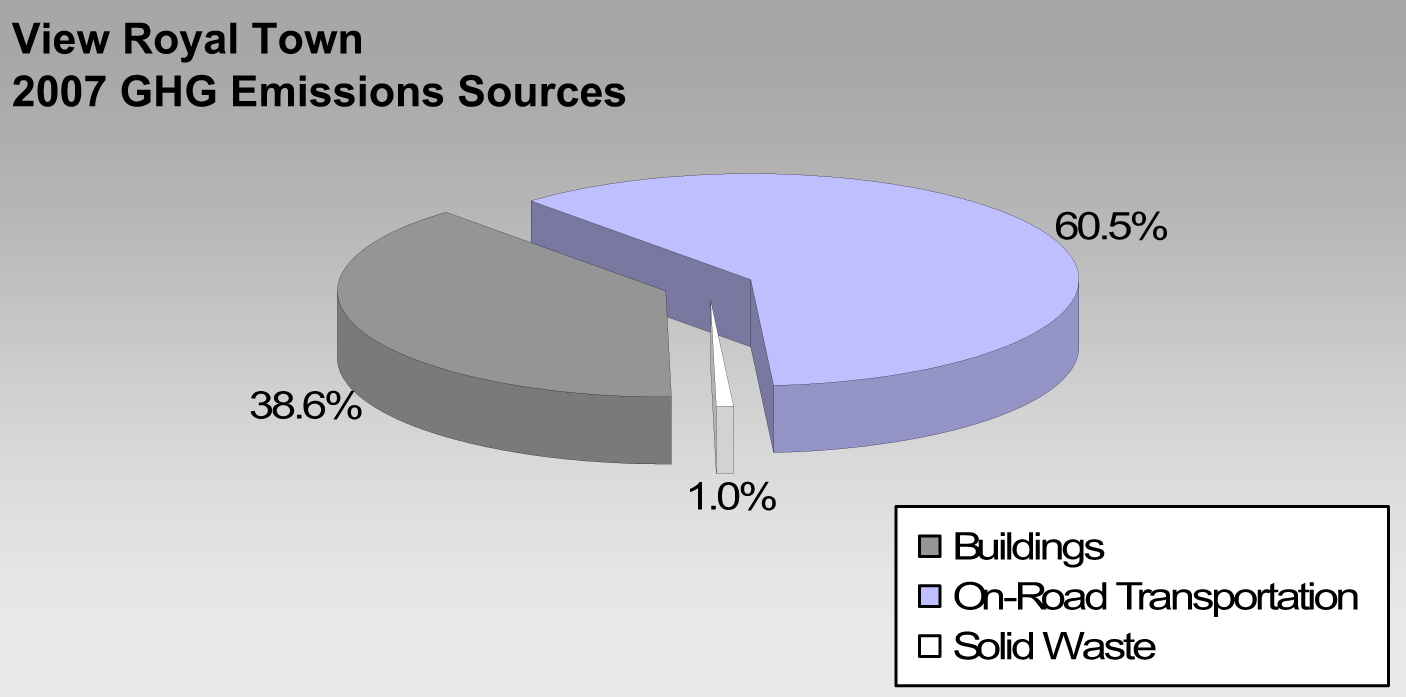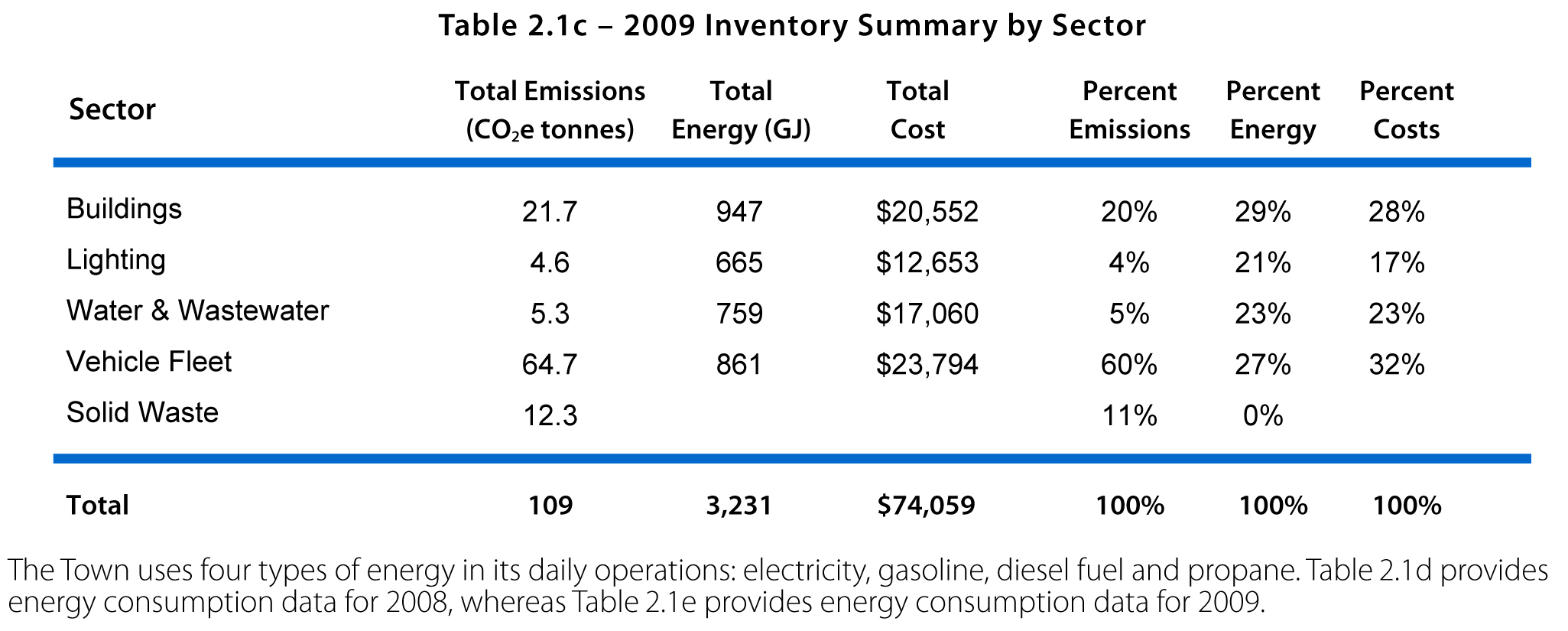Community Energy & Greenhouse Gas Emissions Plan
The Province mandated that all local governments in BC develop community wide greenhouse gas reduction targets. The Community Energy and Greenhouse Gas Emissions Plan will allow the Town to set achievable targets and establish priorities for initiatives to help residents and businesses with their efforts to reduce their carbon footprint.The Town received grants from the Green Municipal Fund of the Federation of Canadian Municipalities and an Infrastructure Planning Grant of the Ministry of Community and Rural Development to complete a Corporate and Community Energy and Greenhouse Gas Emissions Plan. These plans identify the Town's priorities for climate action and initiatives to reduce the amount of greenhouse gas emissions in View Royal.
Emissions
The Town's greenhouse gas emissions come from three sources - transportation, buildings and solid waste.

For more information, see the Town's Energy and Emissions Inventory, or visit www.env.gov.bc.ca/cas/mitigation/ceei/index.html.
The Plan
The Town of View Royal is signatory to the Climate Action Charter, which committed the Town to be carbon neutral in its operations by 2012. The Town completed a Community Energy and Greenhouse Gas Emissions Plan [PDF - 4.2 MB] that identifies how the Town can reduce its use of energy.

As outlined in the table above, the plan identifies that in order to provide the municipal services to residents of View Royal - which includes operation of Town Hall, View Royal Fire Department, parks and boulevard maintenance, sewer and drainage infrastructure, garbage service and road maintenance - the Town requires 3,231 GJ of energy at a cost of approximately $74,000. Given the mix of electricity and fuel powering the Town's buildings, vehicles, street lights and signals, and sewer pumps, this results in a total of 109 tonnes of CO2e (carbon dioxide equivalents).
The Town's energy profile is relatively efficient as the Town has made investments in energy efficient buildings, lighting and systems over recent years. The plan recommends a goal of reducing emissions by 10% over 2007 levels by the year 2017 and identifies the carbon offsets required to ensure the Town is carbon neutral. Go to Top
